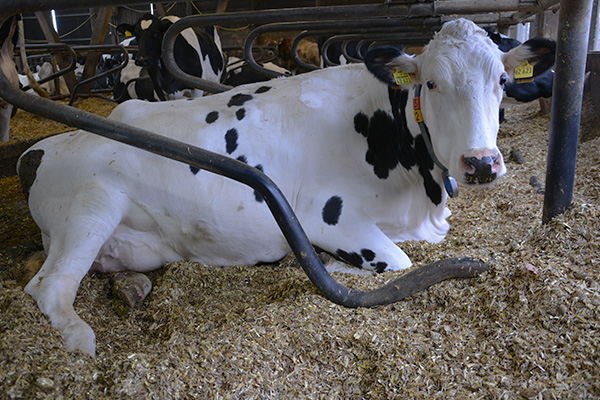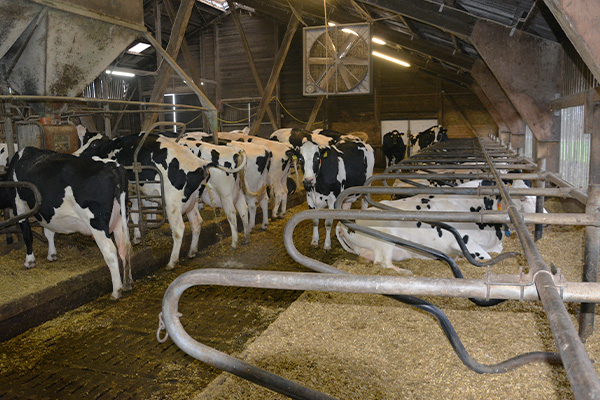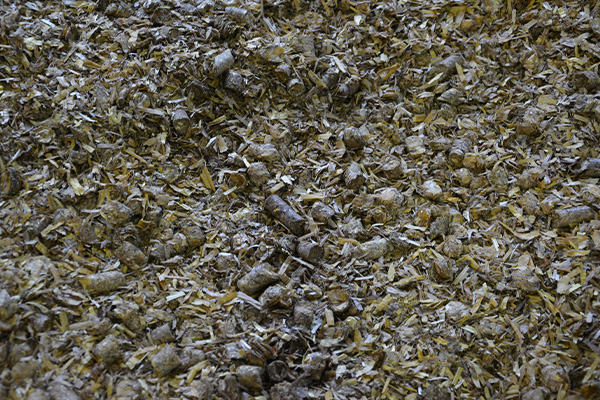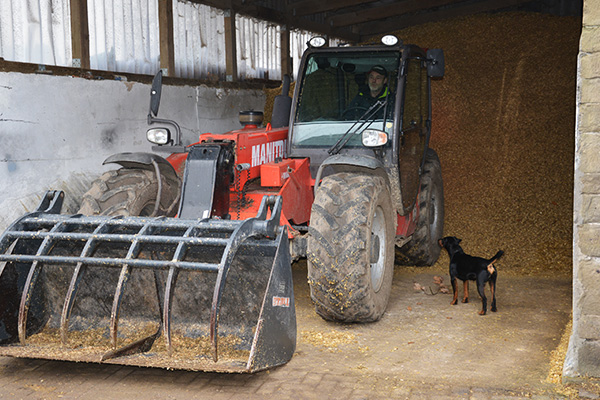Comfortable mattress for cows
Practice makes perfect. This is a short and concise description of the experimental phase on the dairy farm of Stefan Middendorf from Bissendorf in the district of Osnabrück. This applies in particular to the selection of suitable litter in the open cubicle shed in which he currently keeps 50 dairy cows. “At that time, we equipped the cowshed, which was built in 1995, with high-lying stalls on the recommendation of consultants. However, it became clear soon after commissioning that this system with the rubber mats laid on the concrete floor was not really suitable in terms of cow comfort and also labour management,” explains the dairy farmer. Barely two years later, he therefore converted the high-lying stalls into low-lying stalls by simply attaching a 15 cm high wooden beam to the end of the lying stall. Middendorf initially littered the resulting low-lying stalls with sawdust only, then in combination with straw. “This solution was already quite good, but still not ideal. Only the switch to structural straw pellets offers our cows optimum comfort and is also a very good solution in terms of labour management,” says Middendorf.


Straw pellets ideal for bipeds and quadrupeds
Until one and a half years ago, the dairy farmer had used a mixture of sawdust and straw chaff as litter material. As such, this certainly served its purpose, but in terms of work it was simply too time-consuming. “In order to obtain a homogeneous material, we prepared the straw and sawdust in the forage mixer. It has already taken more than an hour to make such a batch. To produce enough litter material for about ten days and spread it in the cowshed, a whole morning quickly passed,” explains Middendorf. In his search for an optimum solution, he finally found what he was looking for on his own farm. Because this is where he keeps 700 laying hens in two mobile sheds under free-range conditions and his experience of using straw pellets as litter and manipulable material has been very positive. “Why shouldn’t these structural pellets also work for cows, I asked myself. So I simply tried out these straw pellets in the cowshed,” says the farmer.
Cows always stay dry and clean
However, he was a little worried that the cows would eat too much of the pleasant-smelling and very tasty straw pellets. “In fact, the cows were really digging in at the beginning, so I then carefully littered the stalls with fewer pellets. But then the feeding suddenly stopped,” says the farmer. However, the first structural pellets made from wheat and rye straw were still extremely hard. In order to speed up the disintegration process in the cowshed, these pellets were then slightly moistened before spreading. “Currently, we use pellets made of our own barley straw which we deliberately did not have pressed so firmly. These have a slightly more friable structure and disintegrate better. The pieces of straw released in the process, which are about 1 to 2 cm long and interlocked with each other, then form a firm mattress on which the cows can lie very comfortably. In the process, the structural pellets prove to be extremely absorbent and absorb significantly more moisture than the straw-sawdust mixture which we previously used,” emphasises Middendorf.

Non-slip mattress promotes animal welfare
The fact that the animals lie dry and clean on the straw mattress has a positive effect on udder health and the cell content of the milk, among other things. “As the pellets are heated up to 90 °C during production, they are almost germ-free. Mould nests, which we used to have with straw litter, are therefore a thing of the past when using straw pellets,” explains the dairy farmer. An important indicator of lying comfort for him are the hocks of the animals: “Chopped straw tends to shift on the stall floor, preventing a firm mattress from forming. Then the animals lie in places on the bare concrete on which they easily slide off. In the process, they can quickly injure their hocks, the hair of which is then often visibly scraped off. This does not happen when straw pellets are used because the cows lie on a non-slip mattress and can stand up and lie down there safely,” explains Middendorf. As another positive effect of the mattress lying firmly on the floor, he mentions that the cows do not easily push the straw of the pellets from the lying stall onto the slatted floor, from where the straw then ends up unused in the slurry channel. However, this short and frayed straw easily dissolves in the slurry which therefore remains very free-flowing and can be spread without any problems.
Easy handling
The straw pellets are also very easy to handle. “We spread about 15 kg of pellets in the lying stalls every ten days. We simply dump the pellets from the bucket of our farm tractor into the stalls and distribute them evenly there before the cows get there. As part of the twice-daily stall maintenance after milking, we dispose of soiled straw material into the slurry channel via the slatted floor. Then we smooth out the gradually disintegrating straw pellets with a rake in the lying stall so that the litter material covers the entire floor again with a dense mattress,” Middendorf explains this routine procedure. He needs around 100 m3 of straw pellets per year which he simply stores in a weatherproof shed. Compared to the past, when he used about 30 big bales of straw of 220 kg each or a total of about 6.5 t of straw plus up to 200 m3 of sawdust per year, the amount of litter and also the amount of manure produced has now been significantly reduced. “The use of structural pellets made of straw is absolutely convincing from the point of view of animal welfare, to which we attach great importance. But this also results in enormous advantages for our farm in terms of labour management,” concludes Middendorf.

Contact
Do you have any further questions and would like to contact us? The contact form is the easiest way.